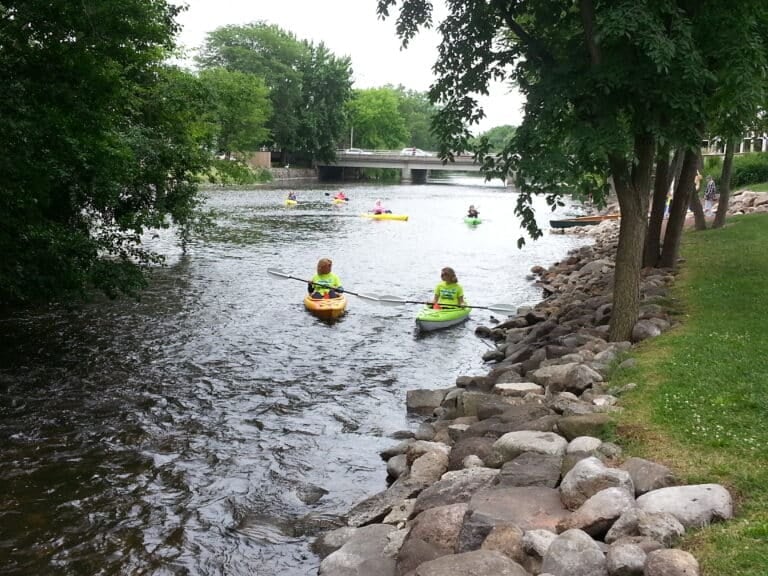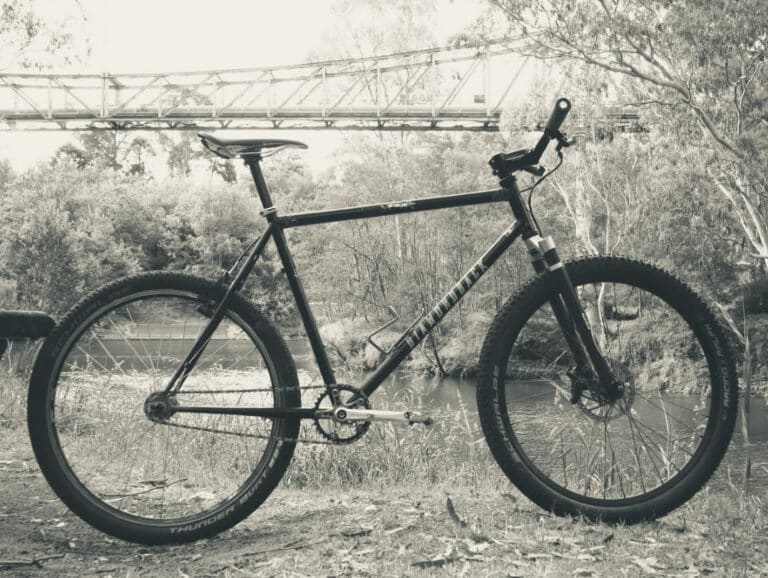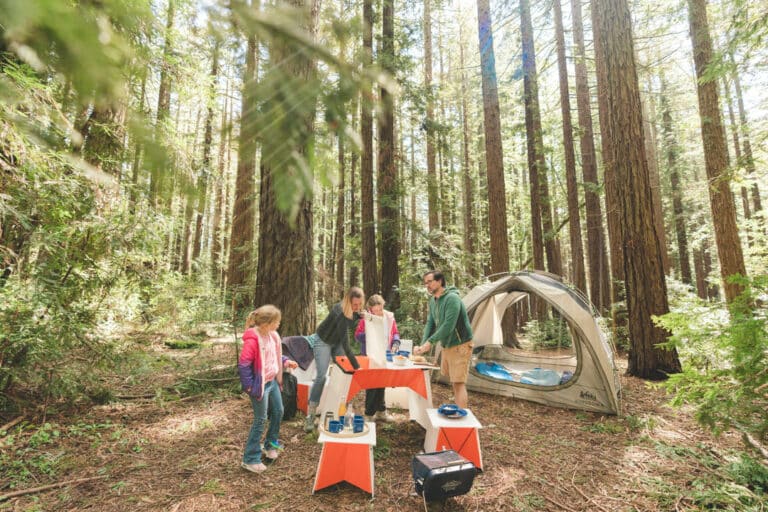
Here’s an absurd hypothetical for you: What do you do if you’re a runner and you’ve conquered the 100-mile foot race? How do you challenge yourself when an ultra marathon has become almost mundane?
You start going after long trail speed records.
Across the country, runners are pushing themselves for days, sometimes weeks at a time on legendary long trails that traverse entire mountain ranges, states, even time zones in pursuit of the trail’s fastest known time. 2008 saw an unprecedented number of speed record attempts on high-profile trails like the A.T. and P.C.T. 2009 looks to be just as busy. Runners are planning speed record attempts for the Benton Mackaye Trail, the Foothills Trail, and the single-day Appalachian Trail mileage record. It’s part of a burgeoning speed record movement as runners move beyond ultras into this complex niche where adventure and experimentation is still alive and well.
“I want to know what it’s like to reach the end of my physical and mental capabilities. I want to hallucinate. I want all that,” explains ultra runner and speed hiker Jonathan Basham, a Lynchburg, Va. native who earned his speed record chops by running the 500-mile Colorado Trail in eight days, 13 hours, and 26 minutes in 2006. The record stood for two years until Pete Pomeroy ran it last summer in just one hour less than Basham.
“For me, that trail record consisted of eight days of balls-to-the-wall hiking and running,” Basham says. “By day four, it felt like someone took a hammer to my feet and pounded them into mush. When you do these things, you experience pain you’ve never felt before.”
For Basham and a growing number of ultra runners, running 100 miles over mountains isn’t challenging enough any more.
“I’m a dude that likes expedition-length stuff,” says Bradley Mongold, the current record holder for West Virginia’s rugged Allegheny Trail. “When you’re out in the woods for an extended length of time, there’s a new element of suffering and self-discovery that’s added to the experience. This is something you can’t necessarily find in your standard ultra.”
In the last 20 years, the popularity of ultra marathons has exploded to the point where most major ultras now have waiting lists, and are stocked with volunteers, medical professionals, and aid stations. Mongold believes that this popularity boom has somehow stipped away the adventure of a 100-mile race.

“Fifteen years ago, an ultra was about seeing how far a person could run and how fast he could run it. It was an adventure,” he continues. “But today, you know the course, you know the aid stations, you’ve got volunteers. How much could you screw up? If you fall during an ultra, you’re surrounded by people. You’re protected. If you fall during a long trail attempt, who knows what’s going to happen?”
There are two Allegheny Trails. One is a 150-mile rail trail with easy grades that connects Pittsburgh, Penn. with Washington, D.C., (think strollers and power walkers in white shoes). The other is a lesser-known 300-mile stretch of singletrack that runs north and south through West Virginia’s Monongahela National Forest. The West Virginia Allegheny is the anti-rail trail. It is steep, rugged, and for a large portion of its corridor, it is unmarked and not maintained. This is the Allegheny Trail that Mongold ran in four days, 13 hours, and 33 minutes.
As if the added element of orienteering wasn’t enough of a challenge, road crossings along the Allegheny are scarce, a fact that forced Mongold to tackle 81 miles on his first day, 53 miles on day two, 61 miles on day three, and an amazing 95 miles in the last 34 hours. Stacking the mileage so heavy in back-to-back days is a strategy that more experienced ultra runners warned Mongold against, but it proved successful.
“I didn’t just want to take the speed record—I wanted to put it away,” Mongold says. “We have no idea how far a person can run in a single push. With speed records, you have to forget any preconceived notions about your physical capabilities. You don’t know what you’ll be capable of out there on the trail. This is unchartered territory.”
Peter Bakwin runs the website Fastest Known Times, which is a collection of all the known speed records in America. Bakwin’s website is the closest thing runners have to a rule book, and Bakwin is the closest thing this sport has to an official. He says that the lure of the unknown and even the very real possibility of failure is what attracts runners like Mongold to attempt outlandish speed records.
“People are always trying to push the envelope in what they believe is possible. A different kind of person gravitates to these trail records. They’re self-motivated, more adventurous. The ‘record’ becomes a context within which to explore our perceived boundaries. I know I can finish a 100-mile race. I want to attempt something that I have no idea if I can finish.”
Anne Lundblad is a six-time member of the U.S. National 100K team. In 2005 she took the silver at the 100K World Cup. She’s reached the pinnacle of her sport, and this summer she and two other female ultra runners will jump head first into the unknown. They will try to run to the summit of all 40 southern peaks that rise above 6,000 feet (SB6K challenge), connecting them all in a seven-day push that will cover more than 300 miles of trail, fire roads, and paved roads. Only one other person has been successful at linking these massive peaks into a single multi-day run. Ted “Cave Dog” Kaiser currently holds the record at four days, 23 hours, 28 minutes. He spent the better part of a year pre-hiking each peak and planning his route.
“I’m nervous. I’ve never done anything like this before,” Lundblad says. “Can I run 50 miles a day for a week? It’s hard to know if that’s reasonable, but I want to find out.”
Lundblad and her cohorts are undergoing the challenge purely for the sense of adventure and aren’t actively going after the SB6K speed record, but simply by completing the challenge in their projected time they’ll earn the women’s record for the challenge. But Lundblad’s not celebrating yet. There is no single trail that connects all the peaks, fifteen of the mountains don’t even have trails leading to their summit, so navigation and bushwhacking will play a key role in the attempt. Planning a route that addresses all of the geographical challenges of the SB6K is a logistical nightmare.
“How do we connect the A.T. with the Mountains to Sea Trail? How do we get from one mountain range to the next? How many miles and peaks can we cover in a day? Where should we have support? Where should we sleep?” Lundblad asks. “There’s so much planning and thought that goes into a multi-day. Just figuring out the logistics is intimidating.”
As more runners attempt speed records of famous long trails hoping to one-up their predecessors, the logistical pre-planning becomes more integral to a successful outcome. Runners agonize over the details of their chosen long trail, deciding well in advance how many miles they need to run each day, where their support crews will set up camp, which roads will be used for re-supplies, how fast they need to hike any given section of trail.
“I planned the Colorado Trail attempt a year in advance,” says Jonathan Basham. “The planning process is half the fun. You make that record your whole life for a while, gathering data and training. It sounds strange, but in my mind, once I planned it all out, I felt I had already broken the record. I just had to go out and do the daily miles.”
Basham is currently planning a speed record attempt on Vermont’s Long Trail, which runs 271 miles from Canada to the Vermont-Massachusetts border. It’s a rugged, remote trail known for muddy bogs, boulder drops, and wet summers, and it’s one of the most coveted speed records in the country. The Long Trail title has changed hands half a dozen times in as many years, passing from one speed record “celebrity” to another (Sam Swisher-McClure, Courtney Campbell, David Horton, Ed Kostak, Ted “Cave Dog” Keizer). With each passing only a few hours has been knocked off the previous record holder’s time.
“Look at all previous attempts at the Long Trail and the first four days are exactly the same,” says Andrew Thompson, the current A.T. speed record holder and the lead support for Jonathan Basham’s upcoming Long Trail attempt. “That trail is always hiked in the same direction, support is set up at the same road crossings, the daily mileages are essentially the same. The race doesn’t even start until the last few hours, then it’s a sprint to the finish. Why? Because every runner before us used the road crossings for support. With that approach, you’re dependent on what the state of Vermont has given you. It’s too limiting.”
Instead of adhering strictly to road crossings to break up daily mileages and re-supply the runner, Thompson and Basham are going to pioneer a new “backcountry” approach to support. For Basham’s Long Trail record, separate crews will hike into the backcountry to set up remote camps that break the trail into 53-mile segments. The goal is to create a balanced hike that leaves Basham relatively fresh for the final sprint on the last day. Of course, anything can happen along the trail. Basham was thru-hiking the Long Trail last fall in preparation for his speed record attempt and was forced to quit early because of lingering ankle pain–too many boulder hops with a 25-pound pack.
“That’s the nature of these sort of attempts,” says Thompson, who was plagued by injuries the entire length of his 47-day A.T. speed record run. “You never fully toughen up. Every morning you wake up and realize you’re a good candidate for the emergency room. In any other situation, you’d get medical help. But you don’t go to the E.R. You crawl out of your tent and crack off another 40 or 50 miles. It’s irrational, but that’s the game.”

“At one point, the man with the shotgun told me, ‘We need to settle this inside my cabin,’” says ultra runner Matt Kirk. “I thought, ‘This is it. This is my Deliverance moment.’”
Kirk is talking about one of his recent speed record attempts on the Bartram Trail, which straddles Georgia and North Carolina for 110 miles. In the middle of the night, Kirk had wandered off trail and inadvertently found himself on private property, facing the business end of a shotgun. Kirk talked his way out of the situation, but the ordeal left him unenthusiastic about pushing for the Bartram speed record. He’s tried to run the Bartram three times, but has yet to land a record.
“That’s the one that’s gotten away,” Kirk says.
Along with running partner Adam Hill, Kirk has attempted the speed records for the Bartram Trail, the Cherokee Foothills Trail in South Carolina, and the Greenbrier River Trail in West Virginia.
Hill and Kirk are careful to avoid some of the controversy surrounding speed record attempts. In 2008, ultra superstar Karl Meltzer attempted a highly publicized A.T. speed record attempt. He had an RV emblazoned with sponsor logos and a website devoted to his attempt claiming: “When he does it, he’ll rule the A.T. as the guy who conquered it, all of it, the fastest on two feet.” Meltzer stirred emotions within the Appalachian Trail community, prompting 115 pages of heated debate on Whiteblaze.net, a popular A.T. web forum. Almost a year after Meltzer’s failed attempt, hikers are still actively debating the merit of his run via the forum.
In 2006, Matt Kirk earned the single day A.T. record (most miles run on the A.T. in 24 hours) by running the entire 99 miles of the A.T. through Shenandoah National Park. Proud of his accomplishment, Kirk posted the details on a trail forum, and was promptly lambasted with hate mail.
“There’s some adamant opposition to this kind of stuff,” Kirk says. “I got some fiery responses that said I was missing the point of the A.T. and didn’t understand what the purpose of the trail was.”
Peter Bakwin considers this sort of criticism as a form of hiking Puritanism. “I don’t understand why anyone would take offense to how another person chooses to enjoy a trail in a non-destructive way. Why would anyone be angry about Karl’s [Meltzer] trip? He was out on the trail on foot like everybody else. He probably brought a ton of publicity and support to the A.T. He had an interesting experience that people can learn from and showed a lot of integrity in the process. There is no right or wrong way to hike the A.T.”

In order to avoid the debate altogether, Kirk and Hill tend to choose lesser known trails that haven’t yet developed the passionate following that the A.T. has earned.
“I love the simplicity of these challenges,” Kirk says. “There’s a trail, how fast can you run it? Getting a big crew together, generating hype—that takes a lot of energy and coordination. For me, all of that takes away from the experience.”
This year, Kirk hopes to simplify his speed record passions even more by attempting an unsupported record attempt of the Benton Mackaye Trail, a long trail that serves as an alternative to the A.T. By going unsupported, Kirk will avoid the logistical nightmares involved in a multi-day run. He won’t have to worry about road crossings or support crews. He’ll have everything he needs with him strapped to his back.
“Pack weight will be key for the Benton Mackaye,” Kirk says. “I’m trying to get that dialed in to ten pounds of gear.”
While Kirk plans his Benton Mackaye attempt, Adam Hill is preparing for a Foothills Trail record attempt as well as a shot at the single day A.T. record.
“After my Greenbriar Trail run, Kirk and I rolled into the parking lot at 4 a.m.,” Hill says. “If that had been a race, there would have been lights, an announcer, some bananas. But it was just us. I had just broken a pretty tough record, and we didn’t even have any beers to crack. We sat in the dark, listening to the tree frogs, waiting for Kirk’s parents to come pick us up. And that’s the way it should be.” •
Do It Yourself
Here are three lesser-known long trails begging for speed record attempts.
Pinhoti Trail: Running through Alabama and Georgia for 325 miles (including 50 miles of road walking), the Pinhoti is poised to be a testing ground for runners looking for a multi-day challenge. Plus, the elevation gains are slight, so fast times are likely.
Bartram Trail: Matt Kirk has attempted this speed record on three separate occasions. Can you beat him to the punch by running the 110-mile Bartram as it traverses some of the wildest mountains in Georgia and North Carolina?
Sheltowhee Trace Trail: Not for the faint of heart, the STT runs for 260 miles through the rugged and remote Big South Fork National Recreation Area in Tennessee and the Daniel Boone National Forest in Kentucky.
Support Classes
Think a speed record is just a walk in the woods? Think again. The speed record world is broken into three separate classifications.
Supported: The most popular class of speed records, runners use fully loaded support crews to re-supply them at key intervals. Often the runners are transported to and from the trail at the end of the day to sleep in hotel rooms.
Self-Supported: Runners will stash supplies ahead of time on the trail or veer from the trail to eat at a restaurant or restock at a store.
Unsupported: Runners carry everything they need for the record attempt on their backs and accept nothing while on the trail.







